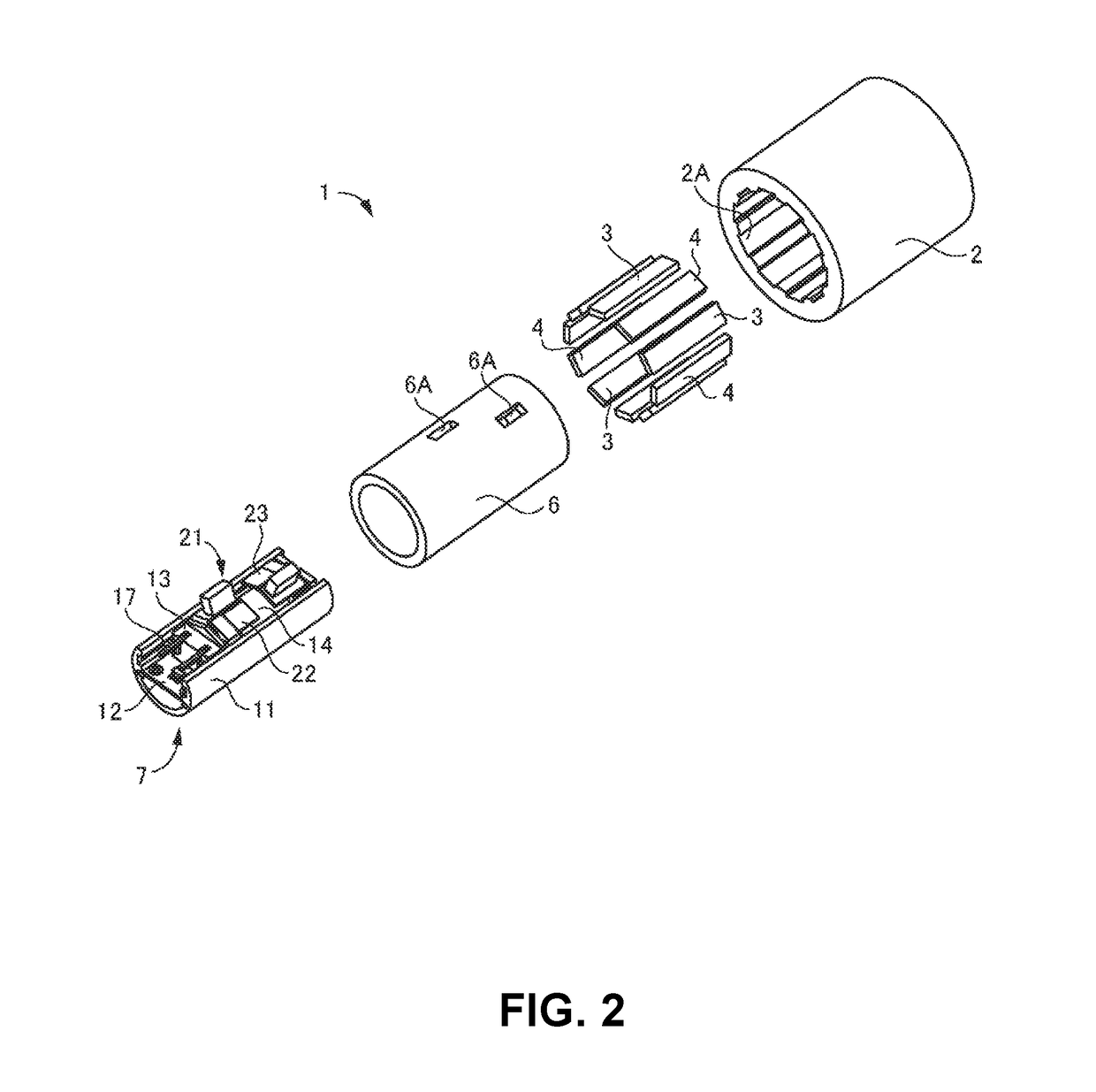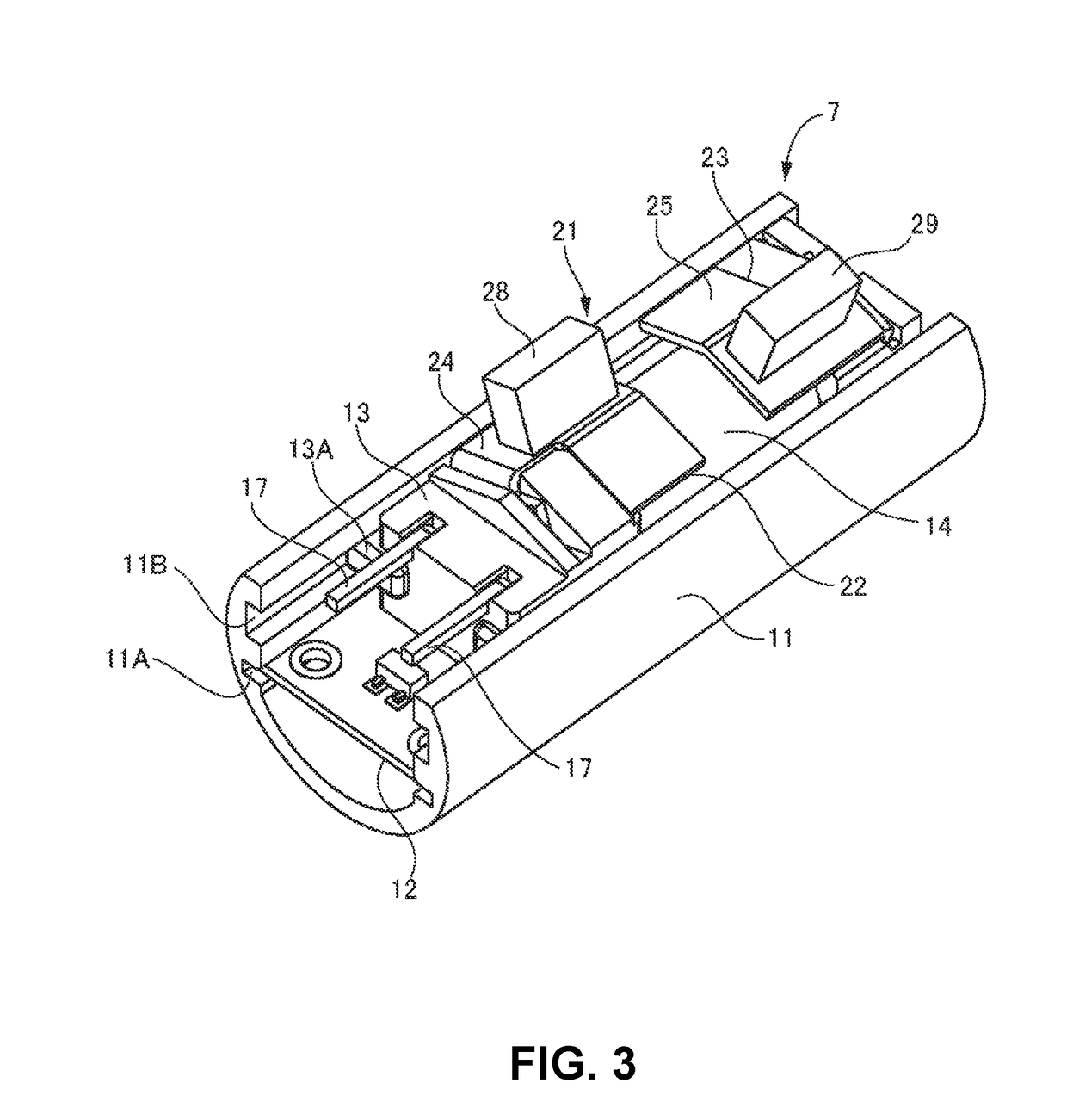Rotation detecting device
- Summary
- Abstract
- Description
- Claims
- Application Information
AI Technical Summary
Benefits of technology
Problems solved by technology
Method used
Image
Examples
first embodiment
[0055]A first embodiment of the present invention will be explained. FIG. 1 is a schematic plan view showing a configuration of a rotation detecting device 1 according to the first embodiment of the present invention. FIG. 2 is a schematic exploded perspective view showing the configuration of the rotation detecting device 1 according to the first embodiment of the present invention.
[0056]As shown in FIGS. 1 and 2, the rotation detecting device 1 includes a cylindrical member (a base member) 6 and a rotational member 2 with a cylindrical shape. The rotational member 2 is inserted into the cylindrical member 6, so that the rotational member 2 is rotated around a rotational axis X thereof relative to the cylindrical member 6. A plurality of magnets 3 and a plurality of magnets 4 as magnetic field generating portions are fixed to the rotational member 2. A detection unit 7 is fixed in the cylindrical member 6, and includes a detection member 14 and a yoke 21 as a magnetic field introdu...
second embodiment
[0106]A second embodiment of the present invention will be explained next. FIG. 9 is a schematic plan view showing a configuration of a rotation detecting device 41 according to the second embodiment of the present invention. FIG. 10 is a schematic perspective view showing the configuration of the rotation detecting device 41 according to the second embodiment of the present invention.
[0107]As shown in FIGS. 9 and 10, the rotation detecting device 41 includes the detection member 14 and a yoke 45. The detection member 14 includes a plurality of magnets 42 and 43, the magnetic member 15, and the coil 16. The yoke 45 includes a pair of yoke pieces 46 and 47.
[0108]In the second embodiment, similar to the rotation detecting device 1 in the first embodiment, the magnets 42 and the magnets 43 are magnetized in a direction perpendicular to the rotational axis X of the rotational member 2. Further, the magnets 42 and the magnets 43 are arranged along the circumferential direction of the rot...
third embodiment
[0113]A third embodiment of the present invention will be explained next. FIG. 11 is a schematic plan view showing a configuration of a rotation detecting device 51 according to the third embodiment of the present invention. FIG. 12 is a schematic perspective view showing the configuration of the rotation detecting device 51 according to the third embodiment of the present invention.
[0114]As shown in FIGS. 11 and 12, the rotation detecting device 51 includes the detection member 14 and a yoke 55. The detection member 14 includes a plurality of magnets 52 and 53, the magnetic member 15, and the coil 16. The yoke 55 includes a pair of yoke pieces 56 and 57.
[0115]In the third embodiment, the magnets 52 and the magnets 53 are fixed to the rotational member 2. Different from the rotation detecting device 1 in the first embodiment, each of the magnets 52 includes a magnet piece 52A and a magnet piece 52B as a magnetic field generating piece. The magnet piece 52A and the magnet piece 52B a...
PUM
 Login to View More
Login to View More Abstract
Description
Claims
Application Information
 Login to View More
Login to View More - R&D
- Intellectual Property
- Life Sciences
- Materials
- Tech Scout
- Unparalleled Data Quality
- Higher Quality Content
- 60% Fewer Hallucinations
Browse by: Latest US Patents, China's latest patents, Technical Efficacy Thesaurus, Application Domain, Technology Topic, Popular Technical Reports.
© 2025 PatSnap. All rights reserved.Legal|Privacy policy|Modern Slavery Act Transparency Statement|Sitemap|About US| Contact US: help@patsnap.com



